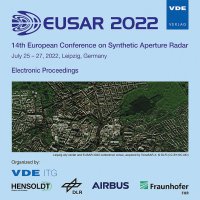A Framework of DTM, DSM, and CHM Generation using Low-frequency InSAR Data over Forest Areas Yanzhou Xiea, Haiqiang Fua, Jianjun Zhua, Changcheng Wanga
Konferenz: EUSAR 2022 - 14th European Conference on Synthetic Aperture Radar
25.07.2022 - 27.07.2022 in Leipzig, Germany
Tagungsband: EUSAR 2022
Seiten: 6Sprache: EnglischTyp: PDF
Autoren:
Xie, Yanzhou; Fu, Haiqiang; Zhu, Jianjun; Wang, Changcheng (Central South University, Changsha, China)
Xie, Qinghua (China University of Geosciences, Wuhan, China)
Inhalt:
Interferometric synthetic aperture radar (InSAR) has been widely used to produce high spatial resolution digital elevation model (DEM) on a global scale. However, vegetation cover above ground strongly biases the DEM accuracy in forested area by shifting the scattering phase center below the top canopy surface and above the underlying topography. Such deviation severely limits further applications of the high-resolution DEM. In this study, we propose to introduce timefrequency analysis and coherent scattering model to increase the observation space and interpret the low-frequency SAR data, so that the forest bias can be precisely estimated and removed, allowing to correct the InSAR phase shifting. Based on this, a comprehensive framework is proposed to generate the realistic digital terrain, surface and canopy height models (DTM, DSM and CHM) over forest areas. The proposed scheme was validated by the P-band InSAR datasets acquired above the tropical rainforest with complicated topography in Lopé, Gabon in Africa. The high consistency between InSAR DTM/DSM and light detection and ranging (LiDAR) DTM/DSM demonstrates the effectiveness and stability of the proposed method, representing a great improvement of 49% - 64% compared to traditional raw InSAR DEM.


